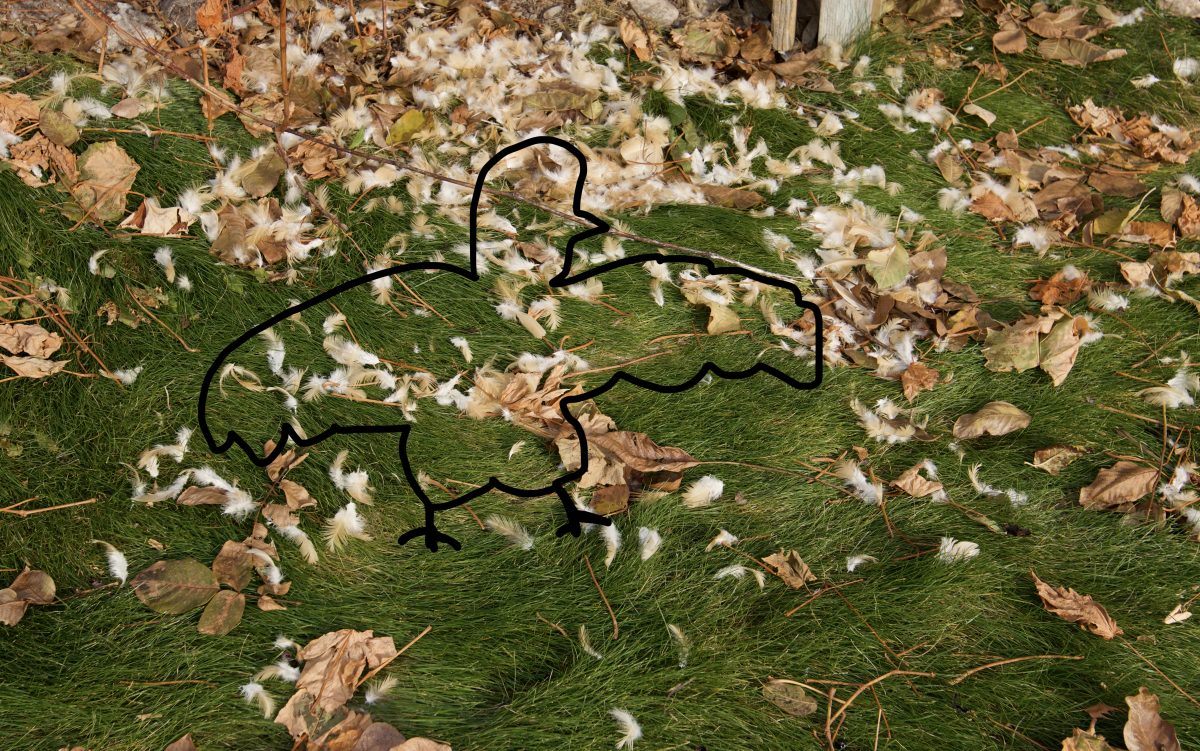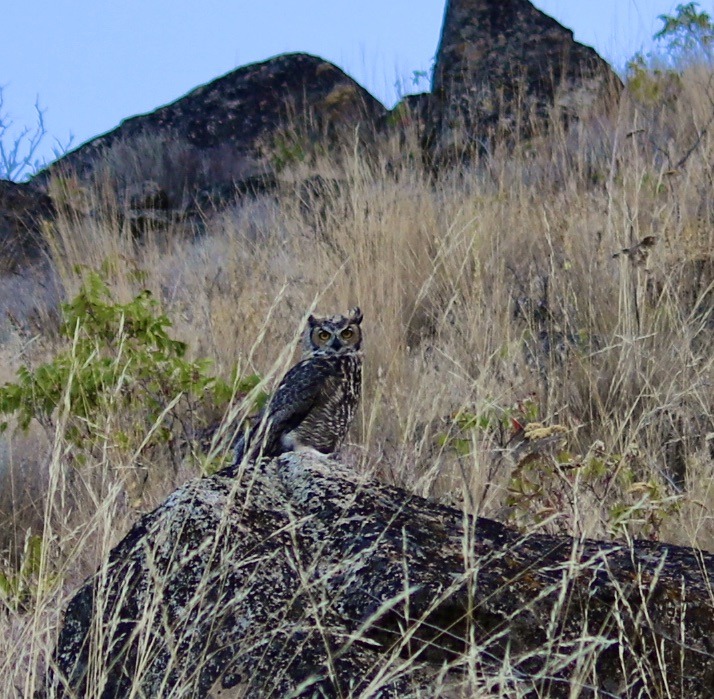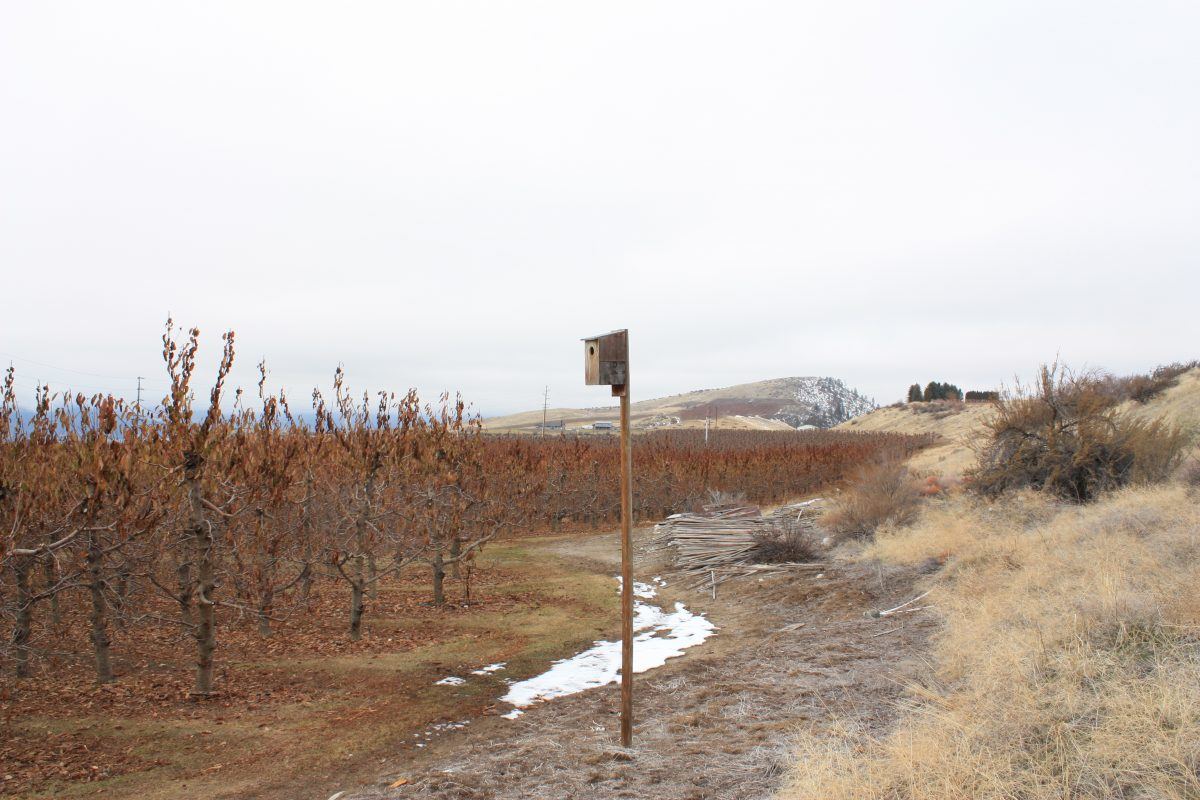Birds of Prey On Our Organic Farm

This beautiful red-tailed hawk visited our front yard last week on a bright sunny afternoon. Usually, he’s a welcome sight on the farm because he’s the big guy in our pest management system. This time though, he really pissed me off. I snapped this shot of him after he tried to make Hazel his afternoon feast. If he looks perturbed, he is! We both were! I interrupted his banquet when I found poor Hazel.
Who’s Hazel?
As our biggest and most senior laying hen, my beloved Hazel became collateral damage since Mr. Red Tail deviated from his usual appetite for rabbits, mice, and voles. By providing birds of prey a nesting habitat, we hope they will consume our crop pests, not my lovely laying hens! Apparently, Mr. Red Tail fancied an epically large meal versus the usual mouse or gopher, and when he spotted Hazel scratching happily in the grass, he thought eureka!

Since Hazel’s size prohibited the red-tail’s preferred carry and go lunch, he brazenly decided to dine-in place on the lawn.

Not on my watch! Horrified, I removed Hazel’s body from the crime scene, then I got my camera because I knew he’d stick around. Glaring at me from his perch above, I got some good photos then I began throwing rocks. He wasn’t going to leave easily because of his sumptuous dining plans. After circling the yard a couple of times, he finally gave up and left.
This is the first time a red-tail has killed one of my free-ranging hens. I have thought the biggest threat to my chickens would be coyotes or weasels. Now I have to worry about red-tails! It’s a conundrum because we depend on raptors, weasels, and coyotes to kill rodents that damage our fruit trees and blueberry bushes. Farming organically means we don’t use pesticides or rodenticides. Instead, we work at prevention by mowing and weeding to eliminate places rodents can hide and nest. Also, we provide nesting boxes to encourage birds of prey to reside nearby. A side benefit is watching red-tails soar above our farm and scream their 2-3 second keeeeee-ar. The sound makes me feel like I’m in a western movie.
An Entertaining Side Note

Snakes do their part in the farm ecosystem as well by controlling small mammal populations. Occasionally red-tailed hawks will capture our mouse eating snakes. Our least favorite mouse eating snakes are rattlesnakes that live on our south-facing orchards. We prefer to think the snake carried off by the hawk is a rattler.
Daughter Natalie likes to drive around the orchards with the top off of her jeep so she and her pups can feel the open road. Last summer, a red-tail with a snake passing overhead caused her to rethink the open top of her jeep.
Top Of The Food Chain

The great horned owl is the nocturnal counterpart to our red-tailed hawk. We see owls occasionally and mostly hear their hoo hooing in the fall and winter as they establish their territory and nest. This juvenile great horned owl showed up in the morning twilight this summer. We thought him to be young with his fluffy feathers and tolerance for me and my camera.
The Mob
As I observed him, a murder of crows showed up. The crows went berserk diving and threatening the owl. He sat perched on a skinny branch that bounced when a crow dived bombed him. He never lost sight of each crow with his cool 180+ degree swiveling head or fell off his skinny branch.
Crows hate owls, hence the mobbing behavior. Owls and other raptors prey upon crows. Crows, with their surprising intellect, recognize the danger and work in groups to harass their enemies. A mature experienced owl is at the top of the food chain in our area. Owls hunt other raptors, birds, and any small mammal or reptile up to the size of small dogs and house cats. With their soft feathers, they can glide silently through the dark to sneak up on prey and suddenly attack.

Our junior great horned owl eventually moved to a rock on the hillside. The mob followed him. Did I say I dislike crows? I refer to the resident flock as Cartel de Manzanas because they especially like to eat our Sweetango apples. We have resorted to inflatable air dancers to discourage their presence during the month before apple harvest.
The Cornell Lab of Ornithology provides details on how to build the right house for the right bird. The right bird for our farm stands two feet tall with a four-foot wingspan! A nest box, more like a hammock, for the great horned owl is kid-friendly, easy, and a good way to encourage a mating pair’s residency on the farm.

I dream that a mating pair of great horned owls find the nest we built and move in. The majestic raptors aptly named Detective Brenda Leigh Johnson, and Special Agent Fritz Howard will head up the farm’s major crimes division. Running out the Cartel de Manzanas will be their number one priority!
American Kestrels

The American Kestrel is the smallest common falcon and is native to our area. They concentrate their hunting of small rodents in the area where they nest. Nest boxes for the American Kestrel are a little more difficult to build and place. We have this relationship whereby the kestrels work for us in small rodent management, and we provide them employee housing/nest boxes on tall posts. Who knew we were also supposed to provide yearly house cleaning? Tricky to do when the pole is fifteen feet tall! We now place the nest boxes on hinged posts that lower the nestbox within easy reach for yearly cleaning.
Osprey

Chelan County PUD added osprey platforms on tall posts near our orchard. Every year osprey nest on those platforms next to Hwy 97A. We often see the family of raptors soaring way up above us, making their high-pitched whistling calls to each other. Their diet is almost exclusively fish from the Columbia River, and the sky above our farm is where they return to play. Although the Osprey doesn’t hunt on our farm, they contribute to the “ecosystem services” that birds collectively support.
Emergency Planning
Our farm needs these great birds of prey, so I’ll take care to live in harmony with their predatory habits. This takes some practice and a little bribing. I may be a small-time chickener, but I’ve got my tricks! I’ve taught my hens to retreat to safety with a specific call that requires I channel the rapper Cardi B. I reward them with tasty mealworms that are so divine they run for a handful. The hope is that I can stay ahead of the danger and round them up quickly before a predator gets too close. Obviously, I need to step up my game, Mr. Red Tail!
A